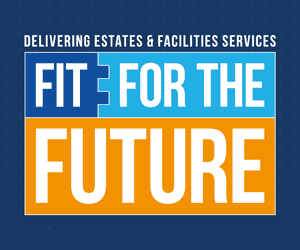As the latest monthly performance figures for the NHS in England show a steadily worsening position, the Health Foundation has called for a realistic approach to tackling waiting lists.
The figures published yesterday show the waiting list for planned hospital care has reached almost six million (5,975,216) - another record high. The number of patients waiting two-years for planned care has increased again, to 16,225, moving further away from the target of March 2022 to eliminate them. The number of patients waiting more than 12 hours on a trolley from decision to admit is now five times higher than at the same point last year - at 10,646. In the week beginning November 29, 2021 there were 19,366 ambulance handover delays in excess of 30 minutes - the highest for any week reported compared to previous winters.
Tim Gardner, Senior Fellow at the Health Foundation says: 'While the NHS has little choice but to weather the storm over the coming weeks, a credible strategy for restoring normal levels of service will be vital. The NHS recovery plan that has been promised needs to be realistic about the time it could take to bring waiting lists down to manageable levels. And any such plan will need to balance the need to support patients waiting much longer than usual for treatment with the wellbeing of an NHS workforce that is under resourced, overstretched, and exhausted by the last two years. This should be a practical strategy that supports innovation and improvement, while not being top-down, punitive or target driven. And it will also need to provide additional support to address the disparities between different parts of the country."
He adds that restoring services will require a commitment to fixing longer-term problems across the health and social care system. This will mean focusing on primary and community care as well as hospitals, preventative measures to stop people becoming ill in the first place, and a plan to tackle the widespread staff shortages, which will continue to hamper efforts to recover services.
Winter watch from NHS Providers
Following the release of the monthly performance data, NHS Providers published the first in its Winter watch 2021/22 campaign for the week November 29 - December 5. It finds that 94% of hospital beds were occupied (compared with 87% for the comparable point last year). 23% of ambulance handovers were delayed by 30 minutes or more and 9.8% were delayed by 60 minutes or more. 217 beds were closed with D&V and norovirus, compared with 58 at the same point last year. Length of stay figures show there are more patients staying in hospital for longer than seven, 14 and 21 days compared to last year (up by 20%, 26% and 32%).
NHS Providers says the ongoing complexity of the COVID-19 pandemic and the emergence of the Omicron variant have major implications for Trusts' capacity and adds the winter could be "significantly difficult." These figures suggest that seasonal pressures, alongside the challenges created by COVID-19, are already being felt.
Chief Executive of NHS Providers, Chris Hopson explains that these pressures are right across the health and care system. "Despite not yet being in the peak of winter, the NHS is running beyond or at full capacity, for example, with 94% of hospital beds occupied, leaving very little flex in the system. This is a particular concern given the new potential threat of Omicron and highlights how important it is for the public to keep coming forward for their vaccinations. "The NHS also needs a fully costed and funded workforce plan to ensure the frontline doesn't have to run at beyond full stretch.
"Additionally, it is striking that more than one in 10 hospital patients cannot be discharged, despite being medically fit. This underlines the importance of immediate extra emergency investment into social care. It is striking how many NHS Trusts are now saying they are diverting NHS staff and financial resource to support social care colleagues; such is the scale of pressure they are facing. This pressure highlights, once again, the need for proper long term investment in community and social care services, as well as permanent, dedicated funding for discharge to assess.
"Trust leaders are also concerned at the level of pressure on the emergency care pathway. Despite huge effort at the front line, the level of 12 hour trolley waits and ambulance handover delays are much higher than Trusts would want, with a consequent impact on quality of care and risk to patient safety."










